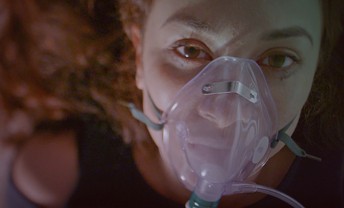The Drug
![]()
What is Fentanyl?
Most people have never heard of fentanyl. But it is everywhere.
Pharmaceutical-grade fentanyl is an opioid (a drug that acts on the nervous system to control pain, like codeine or methadone) first created in the 1960s. By the 1990s, fentanyl was used in the medical field as an anesthetic, as a painkiller, and in palliative care. By 2012, fentanyl was the most widely used synthetic opioid in medicine.
Since 2000, illicitly-produced fentanyl has grown in popularity as a substance used by drug dealers to cut other narcotics, increasing the potency and profits. Frequently, the precursor chemicals used to make fentanyl are manufactured in China and then shipped to large-scale production facilities in Mexico, where the drug is made for relatively low cost as compared to heroin. Fentanyl is then distributed throughout the United States, leading to thousands of overdose deaths.
50x
Stronger than heroin
100x
Stronger than morphine
The Drug
How is it used?
FENTANYL CAN BE A USEFUL MEDICAL TOOL – OR A DEADLY PATHWAY TO OVERDOSE.
Pharmaceutical fentanyl must be prescribed by or taken under the supervision of a licensed physician. For patients experiencing extreme pain or undergoing end-of-life care, pharmaceutical-grade fentanyl is typically administered in lollipop form or via a transdermal patch. As an anesthetic, it is typically administered intravenously.
In contrast, illicit fentanyl is commonly mixed with drugs like heroin, cocaine, and xylazine, or is pressed into counterfeit pills and sold as oxycodone and Xanax. Drug users frequently have no idea that fentanyl is present in the drugs they consume – sometimes, dealers themselves don’t even know.

What are the dangers?
MOST PEOPLE WHO OVERDOSE ON FENTANYL HAVE NO IDEA THEY ARE TAKING IT.
The dangers of illicit fentanyl were brought to the forefront of public attention with the April 2016 death of pop star Prince, who fatally overdosed on fentanyl marked as hydrocodone. Fentanyl’s extreme potency means that a trace amount weighing as little as 2 milligrams can be lethal.
Illicit fentanyl is now present in many types of street drugs, and often neither users nor dealers know what they’re handling. There is no way to tell if the next high could be the last.
Deaths from synthetic opioids have risen dramatically each year, with a massive 279% spike in fentanyl-involved fatalities between 2016 and 2021. CDC officials believe that over 150 people die every day in the U.S. from overdoes related to synthetic opioids, including fentanyl.
The Drug
What happens during a fentanyl overdose?
Every 3 hours someone in New York dies due to drug overdose, fentanyl is present in the vast majority of these cases. Overdose from fentanyl results in a wide range of symptoms, culminating in loss of consciousness, respiratory arrest, and even death.
Naloxone is the most common medication given to overdose victims. An opioid antagonist, it binds to the same receptors that opioids act on. Administered properly and in a timely manner, naloxone can reverse the symptoms of opioid overdose and prevent death. However, with respect to fentanyl mixtures containing xylazine, a non-opioid veterinary sedative, naloxone may not work.
This deception is proving
Fatal
It would be like ordering a glass of wine and instead getting a lethal dose of pure ethanol.
– Dr. Sarah Wakeman, the Harvard health blog
The DamageTo The City
3,046
people died in 2023 from drug overdoses in New York City.
103%
increase from 2019.
That’s nearly eight people a day dying in the five boroughs. More people are killed in NYC each year by overdoses than murders, suicides and car crashes combined. Eighty percent of those overdose deaths directly involve fentanyl.
Fentanyl, a synthetic opioid that is 30 to 50 times stronger than heroin, was present in 80 percent of all overdose deaths in 2023 and remained the most common substance involved in overdose deaths. Xylazine, a non-opioid sedative, was involved in 31 percent of opioid-involved overdose deaths in 2023, an increase from 22 percent in 2022.
-NYC Department of Health and Mental Hygiene
The DamageTo The Body
Expand What a fentanyl overdose looks like:

Pinprick-sized Pupils

Muscle Weakness

Dizziness

Confusion

Low Blood Pressure

Blue Tinted Lips and Nails

Loss of Consciousness

Wooden Chest Syndrome

Exhaustion

Slow Heartbeat

Brain Damage

Death

Even if a fentanyl overdose doesn’t kill the victim, they may be left with health issues for the rest of their life.
Fentanyl is so dangerous because so little is required to overdose. Once an overdose happens, the nature of the drug suppresses both breathing and heartbeat, meaning that very little oxygen travels to the brain.
Even if the victim of an accidental fentanyl overdose is saved, the lack of oxygen in the bloodstream during overdose can lead to permanent brain damage.
What a fentanyl overdose looks like Close

Pinprick-sized Pupils

Muscle Weakness

Dizziness

Confusion

Low Blood Pressure

Blue Tinted Lips and Nails

Loss of Consciousness

Wooden Chest Syndrome

Exhaustion

Slow Heartbeat

Brain Damage

Death
Sightings
 858692501463157
8586925014631572023 Overdose Deaths
By Borough of Residence.
| 858 | Bronx |
| 692 | Brooklyn |
| 501 | Manhattan |
| 463 | Queens |
| 157 | Staten Island |
Help
Download the Fentanyl Brochure version en español and Fact Sheetversion en español
The best way to help is by spreading the word.
Site by Cardwell Beach



 Now
Now